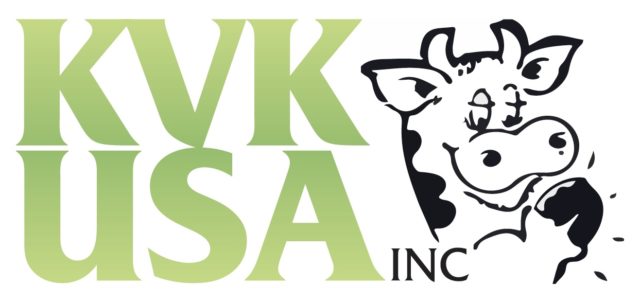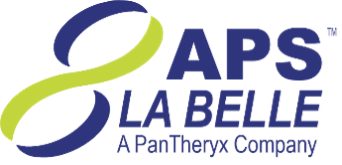U.S. dairy and policy officials are seeking domestic and international solutions to address markets for ultrafiltered (UF) milk.
UF milk gained widespread international notoriety this year with changes to Canadian dairy ingredient policies, making U.S. exports of the product uneconomical and essentially slamming the door on shipments to Canada. With no Canadian export market, and restrictions on UF milk use in the U.S., some companies have been forced to shut down UF milk processing operations, further hampering processing capacity.
Read: Dairy fight with Canada escalates as U.S. farmers face loss of milk market access on May 1and Milk with no home: Producers, processor face challenging times
In the U.S., efforts to get the Food and Drug Administration (FDA) to make policy changes regarding UF milk have been simmering for nearly two decades. According to the International Dairy Foods Association (IDFA), those changes could pave the way for increased UF milk use by U.S. cheese and other dairy product manufacturers.
At issue in the U.S. is the delayed approval of a final rule – initially proposed by the National Cheese Institute (NCI) and two other food trade associations – asking that cheese makers be allowed to use UF milk in the manufacture of all types of standardized cheeses.
Membrane filtration technology, implemented either on-farm or in dairy processing plants, is used to concentrate milk and its valuable components. (The reverse osmosis (RO) separation process generally removes only some of the water.)
However, UF systems separate milk components according to size. Small molecules such as lactose and minerals pass through the filter, while large molecules such as proteins, are held back. The removal of lactose and minerals raises the protein (casein) concentration in UF milk. The higher level of casein, along with less water, lactose and minerals, makes UF milk more desirable in cheese production than use of nonfat dry milk.
The initial NCI petition to FDA sought approval for use of both liquid UF milk and its dried version, milk protein concentrates (MPCs), in cheese production. However, dairy farmers expressed concerns that allowing MPCs, not widely manufactured in the U.S., would lead to increased imports of dairy proteins, displacing farm milk in cheese vats.
In an industrywide initiative, dairy producer and manufacturer organizations subsequently asked FDA to move forward with a proposed rule to allow the use of liquid UF milk in the production of cheese. While considering the proposed rule, FDA granted “regulatory discretion” for use of UF milk in mozzarella and cheddar cheese production, later adding Swiss cheese to the list.
However, in the proposed rule, FDA added a controversial labeling provision differentiating between UF milk produced in a plant as part of the cheese-making process and UF milk sourced as an ingredient from another milk processor or dairy farm with ultra-filtration capabilities, even though the products were nutritionally and physically identical.
Cheese manufactured with “in-process” UF milk could list it as “milk” on the label, but cheese manufactured with “outsourced” UF milk had to include “ultrafiltered milk” as a separate ingredient.
Multiple dairy organizations objected to the proposed labeling requirement. Those organization included IDFA and the National Milk Producers Federation (NMPF), along with the American Dairy Products Institute, the Food Products Association, the Grocery Manufacturers of America and the Wisconsin Cheese Makers Association.
They charged FDA’s labeling requirement was not justified, provided no benefit to consumers, was impractical to implement and would result in consumer deception. Seeking to use milk and UF milk interchangeably based on day-to-day availability, the groups cited the high cost of keeping and tracking expanded labels and labeled product inventories.
“If a cheese manufacturer installs ultrafiltration membranes in its own plant, it could take in milk from the farm, filter it and use it for cheesemaking without listing UF milk as an ingredient,” said Cary Frye, IDFA vice president of regulatory and scientific affairs. “However, if the cheese manufacturer bought UF milk from a farmer in a large operation, or another operation filtering it in another state or across the street, then it becomes an ingredient. That’s when the whole problem of listing ingredients arises. Filtering milk and removing the water is cost effective for shipping, it’s sustainable and it increases yield, but FDA’s proposed labeling rule is impractical and unrealistic.”
These labeling requirements are even more complex for cheese “converters,” companies that buy cheese from multiple sources and may commingle, cut, shred and repackage it for sale, added Clay Hough, IDFA senior group vice president and general counsel.
Rule left unfinished
FDA never finished the final rule, so the dairy industry has been living under a patchwork created by “regulatory discretion” – including labeling requirements – for more than a decade, Hough said.
Earlier this month, U.S. Rep. Vicky Hartzler (R-Missouri), a member of the House Committee on Agriculture, urged FDA to evaluate its existing federal regulations regarding UF milk and to allow regulatory discretion for its use in all standardized cheeses without the need for special ingredient labeling.
“Current FDA rules on the use of UF milk for cheese making are inconsistent and confusing to the domestic dairy industry and stifle product flexibility and innovation,” Hartzler said in a letter to Stephen Ostroff, M.D., acting FDA commissioner. She said she “failed to see the logic” that FDA used when it decided that UF milk processed at a plant can be labeled “milk,” but UF milk processed off-site must be labeled “ultra-filtered milk,” despite the products being molecularly identical.
“The inconsistency and uncertainty of these regulations is discouraging domestic cheese manufacturers from utilizing UF milk in their plants,” Hartzler said, adding that “a comprehensive, consistent approach is needed to allow maximum flexibility and transparency in America’s milk and cheese plants.”
Regulatory process
With the Trump Administration issuing an executive order declaring federal agencies must eliminate two existing regulations for each new regulation created, the path forward is somewhat cloudy.
“There’s a significant vetting process, where the proposed final rule goes through FDA, the U.S. Department of Health and Human Services, the Office on Management and Budget and potentially other places,” Hough said. “We don’t know exactly where it is in the process.”
IDFA maintains that until the rule is completed, FDA should provide universal regulatory discretion to allow all standardized cheeses to use UF milk without the labeling requirement. Further, IDFA feels strongly that the final rule should also allow the use of UF milk without the labeling requirement. Once finalized, Hough believes U.S. cheese makers would utilize more UF milk, offsetting the market disruptions caused by changes in Canadian dairy ingredient pricing policies.
“If we were to clear it up and make it transparent, we feel there would be more uptake of UF milk. We’re confident and comfortable that this will help,” Hough said, noting there are other benefits. “If you take all the water weight out, you’re looking at a more sustainable, greener outcome, with fewer trucks on the road hauling fewer loads.”
Canada and NAFTA
Hough called the Canadian policy “exceptionally problematic,” and called for resolution within the context of North American Free Trade Agreement (NAFTA) renegotiations.
On May 18, the Trump Administration formally notified Congress of its intent to renegotiate NAFTA. The notification triggers a 90-day period before negotiations with Canada and Mexico can begin, as stipulated by the Bipartisan Congressional Trade Priorities and Accountability Act of 2015.
As part of this process, the office of the United States Trade Representative (USTR) is soliciting public comments to identify negotiating priorities. The Federal Register notice comment period is open through June 12, followed by a public hearing on June 27. IDFA will be actively participating in the entire renegotiation process, starting with working with its members to develop comments.
In a letter to U.S. Trade Representative Robert Lighthizer and USDA Secretary Sonny Perdue, Senate Ag Committee leaders Sen. Pat Roberts (R-Kansas), chairman, and Debbie Stabenow (D-Michigan), ranking member, called on the U.S. officials to engage with Canadian leaders to “evaluate all tools available to help mitigate any damaging effects” resulting from changes to Canada’s National Ingredients Strategy.
“This scheme has resulted in a loss of sales for U.S. dairy companies and farmers,” the senators wrote. “The potential for further and greater injury to U.S. producers will only continue to grow if this scheme remains in place.”
In early May, NMPF, IDFA and U.S. Dairy Export Council (USDEC) organized a dairy policy fly-in in Washington, D.C., hosting more than 40 farmers and dairy company executives.
In addition to speaking to elected officials, dairy coalition members met with USDA and trade officials, with Canada’s dairy ingredient pricing policies among topics garnering attention.
“Canada’s new Class 7 milk pricing scheme unfairly undercuts U.S. dairy exports to Canada and around the world,” said Jim Mulhern, NMPF president and CEO. “This is an economic dagger pointed at every farmer in the United States, not just those from a few states.” ![]()

-
Dave Natzke
- Editor
- Progressive Dairyman
- Email Dave Natzke








